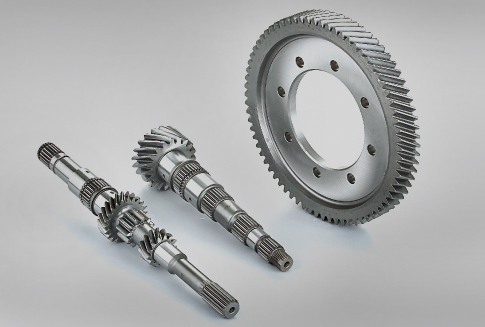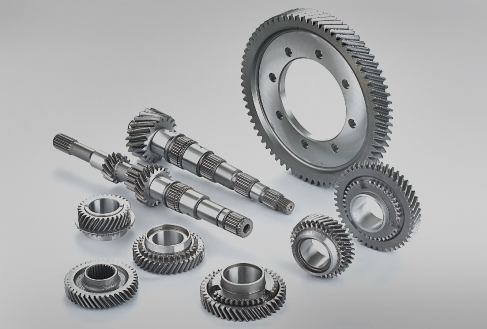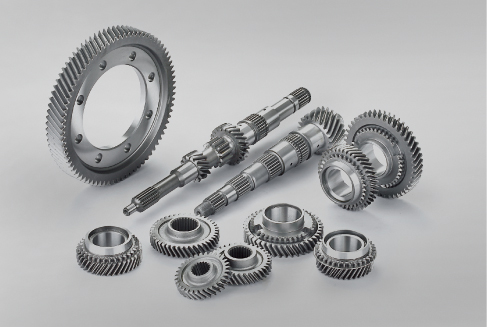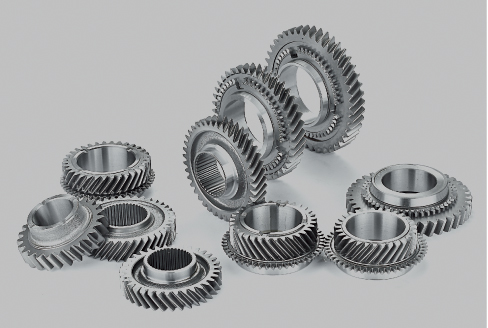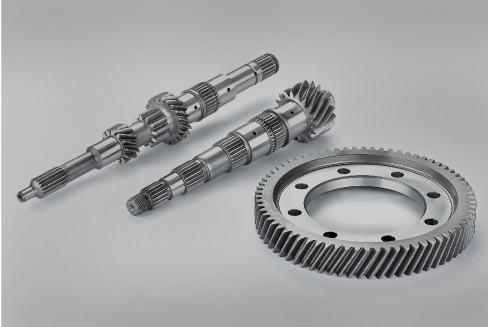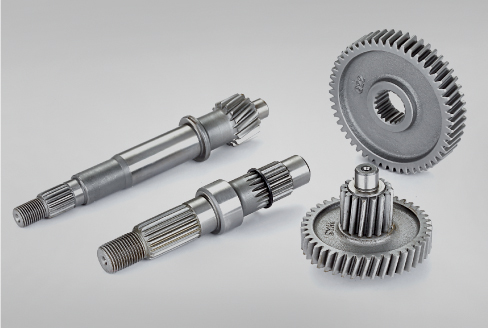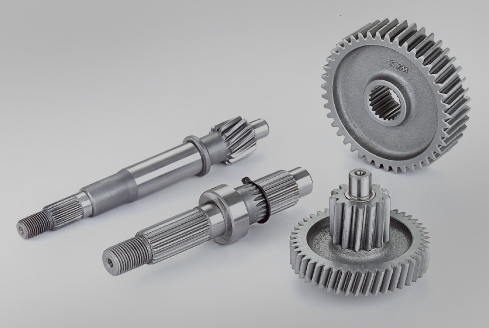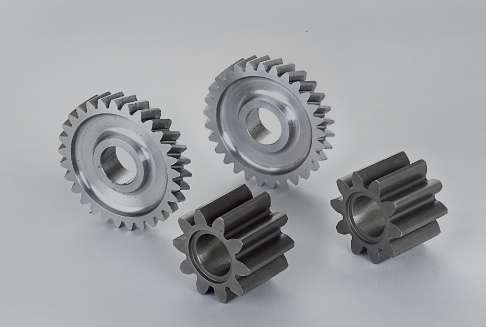Professional manufacturer of automobile transmission gears, mechanical engineering gears, engine gears, light and heavy trucks, and truck transmission gears.
Exploring the Evolution of Automotive Transmissions: Innovations Driving Performance and Efficiency
Update time:2024/01/03
Automotive transmissions have undergone a remarkable evolution since their inception, playing a pivotal role in the operation and performance of vehicles. From manual to automatic, continuously variable transmissions (CVTs), and emerging technologies, the transmission system continues to transform, enhancing driving experiences, fuel efficiency, and overall vehicle performance.
The manual transmission, a classic system, involves the driver manually shifting gears using a clutch pedal and gear stick. While valued for its driver engagement and control, its prevalence has declined in favor of automatic transmissions due to the convenience they offer. Automatic transmissions eliminate the need for manual gear shifting, utilizing fluid coupling or torque converters to shift gears automatically. This shift mechanism brought ease of use, especially in heavy traffic and on inclines, leading to widespread adoption.
Continuously Variable Transmissions (CVTs) represent a significant leap in transmission technology. Instead of fixed gears, CVTs use a belt or chain running between two pulleys to provide an infinite range of gear ratios, allowing the engine to operate at its most efficient level. CVTs offer smoother acceleration, improved fuel efficiency, and seamless transitions between gears compared to traditional automatic transmissions.
The pursuit of enhanced efficiency and performance has given rise to advanced transmission technologies. Dual-clutch transmissions (DCTs) combine the best of manual and automatic transmissions, utilizing two separate clutches for odd and even gears, enabling lightning-fast gear changes and enhanced fuel economy.
the integration of electronic control systems and sensors has revolutionized transmissions. These systems monitor driving conditions, adjust gear ratios, and optimize engine performance in real-time. This adaptive control ensures optimal efficiency and performance under various driving scenarios.
the automotive industry has witnessed the emergence of electric vehicles (EVs) and hybrids, transforming the landscape of transmission technology. EVs typically employ a single-speed transmission or direct-drive system, simplifying the transmission components due to the inherent characteristics of electric motors, such as instant torque delivery and a wide power band.
on the other hand, often incorporate innovative transmission systems like power-split and e-CVTs. Power-split hybrids use a combination of electric motors and internal combustion engines, with a planetary gearset enabling seamless switching between power sources for optimal efficiency. e-CVTs, specifically designed for hybrids, offer flexibility in power distribution between the engine, electric motor, and wheels, maximizing efficiency across various driving conditions.
Looking ahead, the automotive industry continues to invest in research and development to further refine transmission technologies. Advancements in materials, such as lightweight and durable alloys, aim to improve efficiency and reduce frictional losses. Additionally, the integration of artificial intelligence and machine learning is expected to enhance predictive shifting algorithms, adapting transmission behavior based on individual driving styles and road conditions.
automotive transmissions have evolved significantly, from manual to automatic, CVTs, and beyond, driven by the pursuit of efficiency, performance, and driver convenience. The ongoing advancements and innovations in transmission technology promise to redefine the driving experience, offering more efficient, responsive, and eco-friendly vehicles for the future.
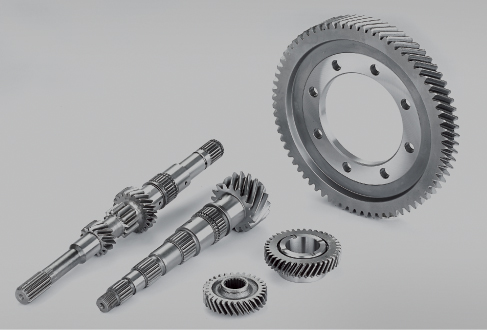
The manual transmission, a classic system, involves the driver manually shifting gears using a clutch pedal and gear stick. While valued for its driver engagement and control, its prevalence has declined in favor of automatic transmissions due to the convenience they offer. Automatic transmissions eliminate the need for manual gear shifting, utilizing fluid coupling or torque converters to shift gears automatically. This shift mechanism brought ease of use, especially in heavy traffic and on inclines, leading to widespread adoption.
Continuously Variable Transmissions (CVTs) represent a significant leap in transmission technology. Instead of fixed gears, CVTs use a belt or chain running between two pulleys to provide an infinite range of gear ratios, allowing the engine to operate at its most efficient level. CVTs offer smoother acceleration, improved fuel efficiency, and seamless transitions between gears compared to traditional automatic transmissions.
The pursuit of enhanced efficiency and performance has given rise to advanced transmission technologies. Dual-clutch transmissions (DCTs) combine the best of manual and automatic transmissions, utilizing two separate clutches for odd and even gears, enabling lightning-fast gear changes and enhanced fuel economy.
the integration of electronic control systems and sensors has revolutionized transmissions. These systems monitor driving conditions, adjust gear ratios, and optimize engine performance in real-time. This adaptive control ensures optimal efficiency and performance under various driving scenarios.
the automotive industry has witnessed the emergence of electric vehicles (EVs) and hybrids, transforming the landscape of transmission technology. EVs typically employ a single-speed transmission or direct-drive system, simplifying the transmission components due to the inherent characteristics of electric motors, such as instant torque delivery and a wide power band.
on the other hand, often incorporate innovative transmission systems like power-split and e-CVTs. Power-split hybrids use a combination of electric motors and internal combustion engines, with a planetary gearset enabling seamless switching between power sources for optimal efficiency. e-CVTs, specifically designed for hybrids, offer flexibility in power distribution between the engine, electric motor, and wheels, maximizing efficiency across various driving conditions.
Looking ahead, the automotive industry continues to invest in research and development to further refine transmission technologies. Advancements in materials, such as lightweight and durable alloys, aim to improve efficiency and reduce frictional losses. Additionally, the integration of artificial intelligence and machine learning is expected to enhance predictive shifting algorithms, adapting transmission behavior based on individual driving styles and road conditions.
automotive transmissions have evolved significantly, from manual to automatic, CVTs, and beyond, driven by the pursuit of efficiency, performance, and driver convenience. The ongoing advancements and innovations in transmission technology promise to redefine the driving experience, offering more efficient, responsive, and eco-friendly vehicles for the future.


 简体中文
简体中文 English
English España
España Русский язык
Русский язык
